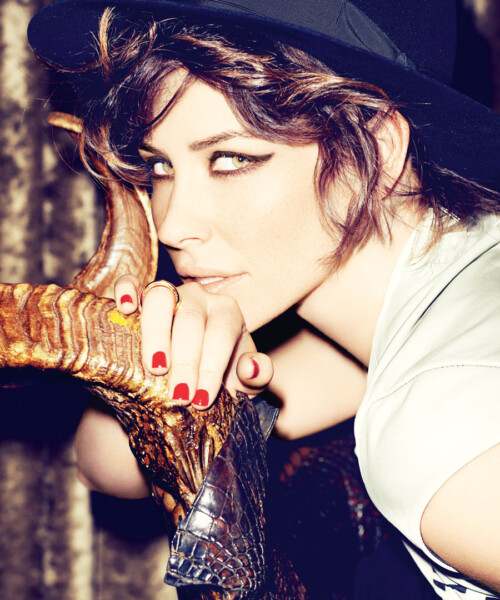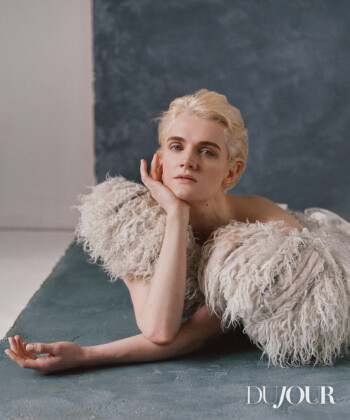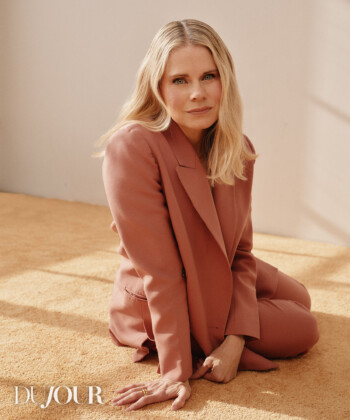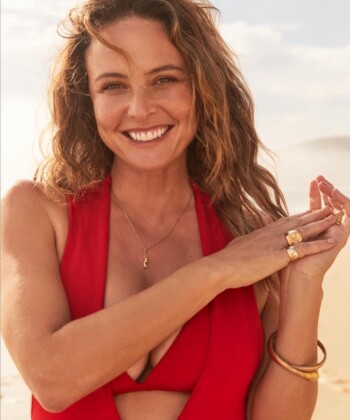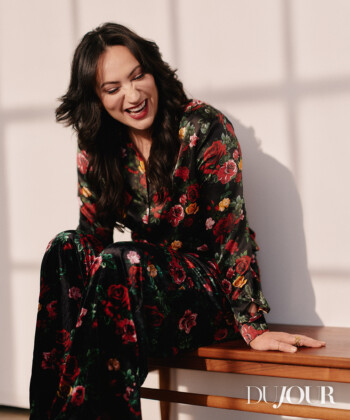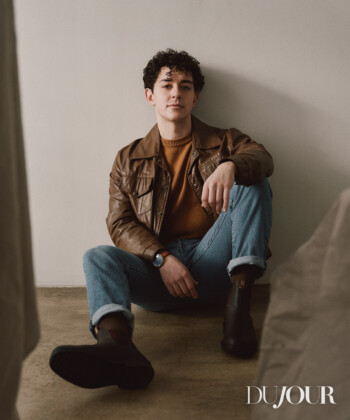Most actresses would like to be able to walk through a restaurant without getting hit on by a waiter. And then there’s Evangeline Lilly.
Last week Lilly arrived in Manhattan to promote The Hobbit: The Desolation of Smaug, and while at a midtown steakhouse, the waiter in question stopped her in her tracks. As Lilly tells it, “He said, ‘You are who I think you are, right? Oh my God, I love you so much! I loved Lost. Can I take you out for a drink later?’ ” She politely declined, but there are no hard feelings. In fact, Lilly says: “Good for him for having the balls to ask. Now he has a great party story.”
Contrary to what anyone with eyesight might assume, this kind of thing never happens. “Never!” she emphasizes. “Once I became a public figure, that ended. Men stopped talking to me. Because they think, ‘Why would she want to date me?’ But the irony of it is, that’s exactly why you’d want to date them—everyone needs something to ground them in their life, and often for public figures, that’s their partner.”

Evangeline Lilly as Tauriel in “The Hobbit: The Desolation of Smaug”; photo: James Fisher © 2013 Warner Bros. Entertainment Inc.
Her repeated use of “public figure”—presumably in lieu of the word “famous”—is telling. Movie-star looks aside, the 34-year-old actress is about as un-Hollywood as they come. And that’s likely because she never expected to end up there. Lilly grew up in Alberta, Canada, where her working-class family often struggled to make ends meet. She took odd jobs to pay her way through university—a Sunday school teacher, a mechanic, a flight attendant—until auditioning on a whim for the role of Kate Austen on the TV show Lost. Prior to that, she’d mostly worked as an extra on film sets.
“When I got the job on Lost, I was a broke university student living in the crappiest part of town, with a duct-taped back window on a broken-down car. I existed on peanut butter and tea,” she says. “When somebody said, ‘I will pay you a lot of money to come and do this,’ it was worth it to make the sacrifice for a certain amount of time in order to have the flexibility that comes from having more financial freedom.”
Lilly began filming in 2004 and when the show premiered on ABC in September of that year, 18 million people tuned in. “I remember filming the pilot in Hawaii and every time I would go out in public thinking to myself, Enjoy your anonymity and these moments when you can sit in a café and have a coffee. Enjoy this, because this will end very soon.”
When Lilly received a Golden Globe nomination in 2007, the attention became overwhelming. A few seasons into filming, the paparazzi in Hawaii had become so intrusive, she refused to leave the house. “It felt a little bit like being a prisoner under house arrest, but I was so tired of seeing myself in a bikini in People magazine. Nobody ever thinks that they look good enough. I’m a very comfortable person with my body, but it’s a whole other thing being photographed like that.
There were redeeming qualities to doing a series in Hawaii, of course. Says Lilly, “We were incredibly lucky to be filming on the beach and in the jungle instead of filming in a studio in the middle of Burbank… but by season five or six, I was at my wits’ ends a little bit. The show’s budget kept getting smaller and smaller and things kept getting harder and harder, and cheaper and cheaper, and the circumstances got worse and worse. I would come to set with huge pots of Sangria for the cast to take the edge off.”
When Lost ended, Lilly craved a break from the acting world. She’d planned to take a solo road trip cross-country, but when she fell in love with Norman Kali—who worked as a production assistant on Lost—the plan changed. Instead, the couple road-tripped for 45 days straight, in the winter, while Lilly was seven months pregnant. It’s a feat she strongly advises against. “I had to stop and pee every five seconds. We’d be sleeping in the back of a van, and I would have to crawl over [Norman], put on my head-to-toe snow gear, pull down my big sweatpants and squat in the snow, then get back in the sleeping bag. I would do that two or three times a night. I was very large and very pregnant at that point. It was a little crazy.”
But it is precisely that toughness that made her the ideal candidate to play The Hobbit’s Tauriel, a redheaded warrior elf that does not appear in J.R.R. Tolkien’s original book, but was created by the filmmakers. “We knew that we wanted Tauriel to be a fighter,” says screenwriter Philippa Boyens, who worked alongside director Peter Jackson on the movie. “She needed to be dangerous but very willing to show vulnerability. Once we had a concept drawing, it was immediate—we knew [Evangeline] would be perfect. She takes risks and does her own stunts. She gets down and dirty, covered in mud and blood, but manages to keep it graceful and fluid.”
Professional admiration aside, Boyens admits that she and fellow screenwriter Fran Walsh had preconceived ideas about what Lilly would be like off-screen. “We were determined to hate her. She’s so gorgeous and rarely puts on makeup. She can eat so much food and she never puts on a pound. But do you know what? You can’t help it—you just end up falling in love with her. She’s a real person. There’s zero fake about her.”

Lilly and Orlando Bloom as Legolas; photo: James Fisher © 2013 Warner Bros. Entertainment Inc.
Lilly was fascinated by the shooting of the Hobbit. A fan of the Tolkien books from childhood, she was a newcomer to a tight-net production team and several actors who’d worked with Jackson on the three Lord of the Rings movies, followed by last year’s The Hobbit: An Unexpected Journey. “Peter runs a very calm, relaxed set—it’s really nice—but the shooting schedule was changing every day; there were new pages coming in every day. Peter’s style of working is to get in the trenches and see what’s coming out of it, and be inspired by that. I don’t think he comes in with a very concrete notion of what he wants to do, he let’s the process guide him, which is wonderful and it allows for a lot more collaboration. But it also makes for some chaos.”
As she sips an English Breakfast tea after lunch, Lilly is summoned by the maître d’. When she gets back, she tells me that her publicist resorted to that to reach her, since she didn’t bring a cell phone—or even a handbag—to the restaurant. She’s running late for the final stop on her press tour before The Hobbit premieres the following day. She doesn’t seem nervous about how fans will receive her in the film, particularly those who take issue with Tauriel being a non-Tolkien character.
“There are a lot of forums online where fans are furious,” she says. “They’re venting that anger and expressing themselves, and I just feel like, more power to you—get out there and express your opinions. The press’s reaction to my character has been really positive, and a lot of the press is the audience we’re targeting. I’ve had people who have seen the film who have daughters thank me for being part of it, because otherwise their daughters would have had hours of cinema without a single female character onscreen. In 2013, that’s unacceptable.”
Evangeline Lilly says, “The more people that talk and fight about it, the more it means you’re doing something meaningful. Because if you’re not doing something meaningful, no one’s going to pay attention.”
Click on the gallery above to view photos from our shoot.
MORE:
Lupita Nyong’o’s Defining Moment
Diane Kruger Off Duty
The Everywoman in Kim Kardashian


























